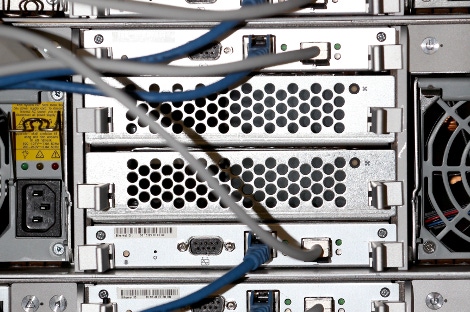How Data Center Virtualization Shrinks Physical DistanceHow Data Center Virtualization Shrinks Physical Distance
In working with cloud and virtualization, specifically around data center infrastructure, we see that there is an underlying theme: removing the complexity of distance.

Over the past couple of years lots of new technological buzz terms have come around. One of those revolves around “software-deigned” platforms that aim for entire data center virtualization, way beyond server virtualization alone. The idea is simple: to unify processes to make the IT environment easier to manage and more efficient. In working with software-defined technologies, specifically around data center infrastructure, we see that there is an underlying theme: Removing the complexity of distance.
Of course software-defined technologies have other great purposes, but for the sake of this conversation we are going to examine exactly how data center virtualization, or software-defined tools, help bring data centers closer together.
Virtual and Physical WANOP. We’ve discussed this before, but it’s very important to note that WAN optimization has really come a long way. Not only are we trying to improve the end-user computing experience, we are also improving communication between data centers. Now, edge devices are able to optimize communication between multiple data centers spanning a country or even the globe. Furthermore, client-less WANOP solutions allow you to optimize user sessions in completely new ways. Finally, new capabilities around working with virtual WANOP appliances allows you to save on hardware space while still optimizing the cloud and user experience.
Global Server Load Balancing. As a way to make the data center more resilient, engineers continuously look for ways to eliminate single points of failure. In that sense, technologies around GSLB have allowed national data centers to become more agile as disaster recovery sites. Now users can be load-balanced between entire sites to keep in line with business continuity requirements. As a way of virtualizing traffic and deploying these powerful load-balancing controllers, it’s important to note that this process can now be done entirely in the logical layer. In the past, organizations would have to buy physical appliances to accomplish GSLB. Virtual instances and network function virtualization allow you to have virtual load-balancers ensuring an optimal data center bridge.
DCIM and DCOS. Think of the data center operating system as the next evolutionary step for Data Center Infrastructure Management (DCIM). Data center administrators are going to build in infrastructure automation on a multi-site level. As one site needs more resources or offload some users, another location can pick up the slack. This can be done much easier by using the next-generation of data center management technologies. Here’s the other big point to remember: as you are bridging your data centers, you’re also building bridges around the cloud. The data center management layer can now extend from private to public and help you manage the resources in between.
Open-Source Computing. Surprised? Open-source technologies have been taking the networking, virtualization, and management industry by storm. Technologies like CloudStack and OpenStack are allowing for direct cloud infrastructure integration. The challenge with open-source technologies, however, is standardization. However, much of that is changing. Open-source solutions are helping service providers and some large organizations rethink how they build and bind their data centers. The revolution driven by the likes of Cumulus Networks, companies that build Linux-based network management software for commodity switches, is only one example. Basically, Cumulus Linux is a software-only solution that provides the ultimate flexibility for modern data center networking designs and operations with a standard operating system.
There’s no doubt that optimization technologies are going to continue to evolve. One of the key technologies making the data center virtualization push is of course software-defined networking. We can do so much more with a physical switch now than we ever could before. We even have network virtualization and the ability to quickly create thousands of vNICs from physical devices. The ability to dynamically create LANs, vLANs, and other types of connectivity points has become easier with more advanced networking appliances.
This goes far beyond just optimizing the links between data center environments. Moving forward, we are creating a truly distributed system capable of resiliency and business continuity. Even now the open-source environment is picking up pace with various distributed environment management platforms. As the market continue to evolve, it will be critical for your organization to keep pace with user and industry demands. One important methodology there will be to closely tie your data center services with that of the cloud. Using cloud, virtualization, and optimization are great ways to not only create good traffic flow and user controls, but it also helps create a much more agile data center ecosystem.
About the Author
You May Also Like









